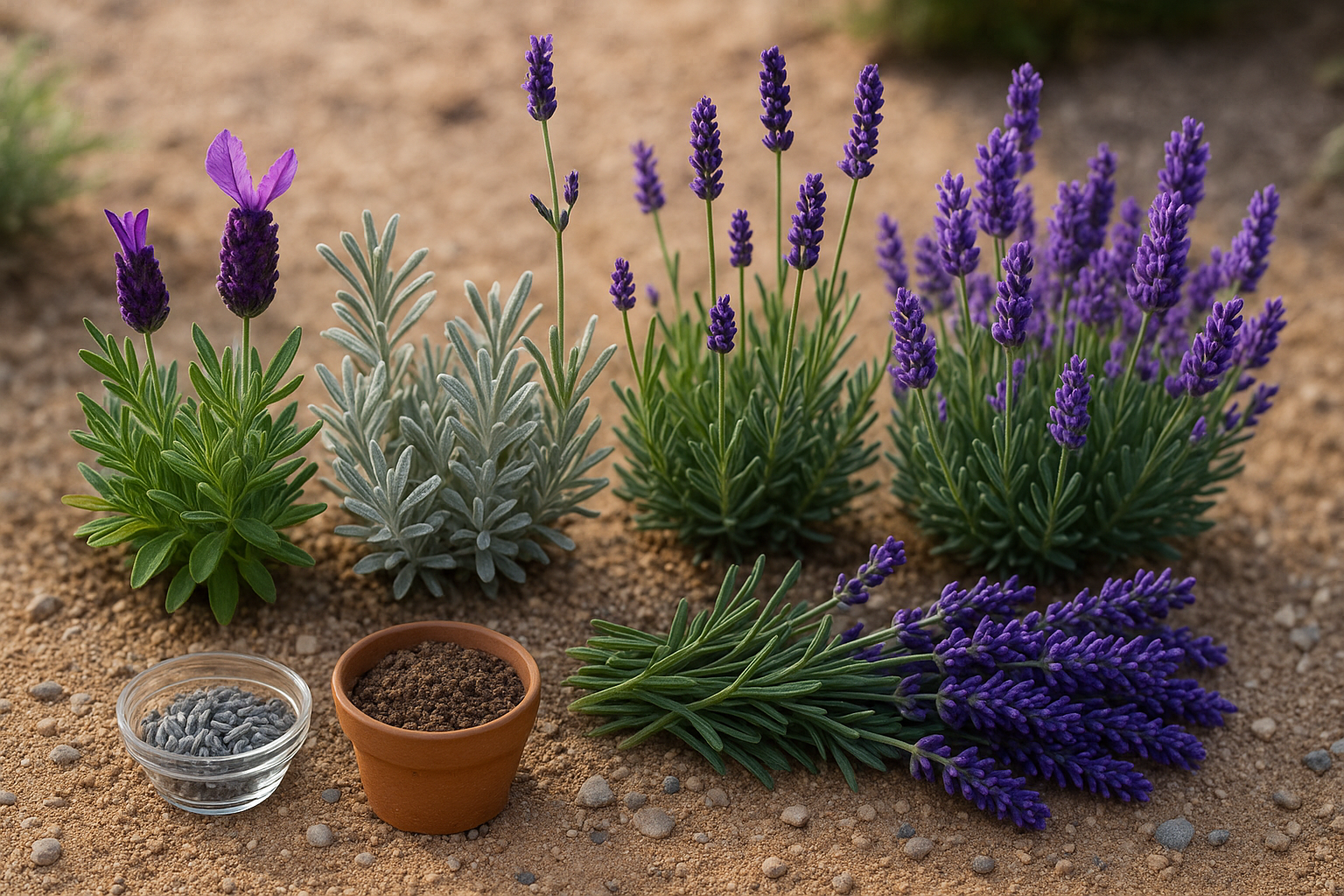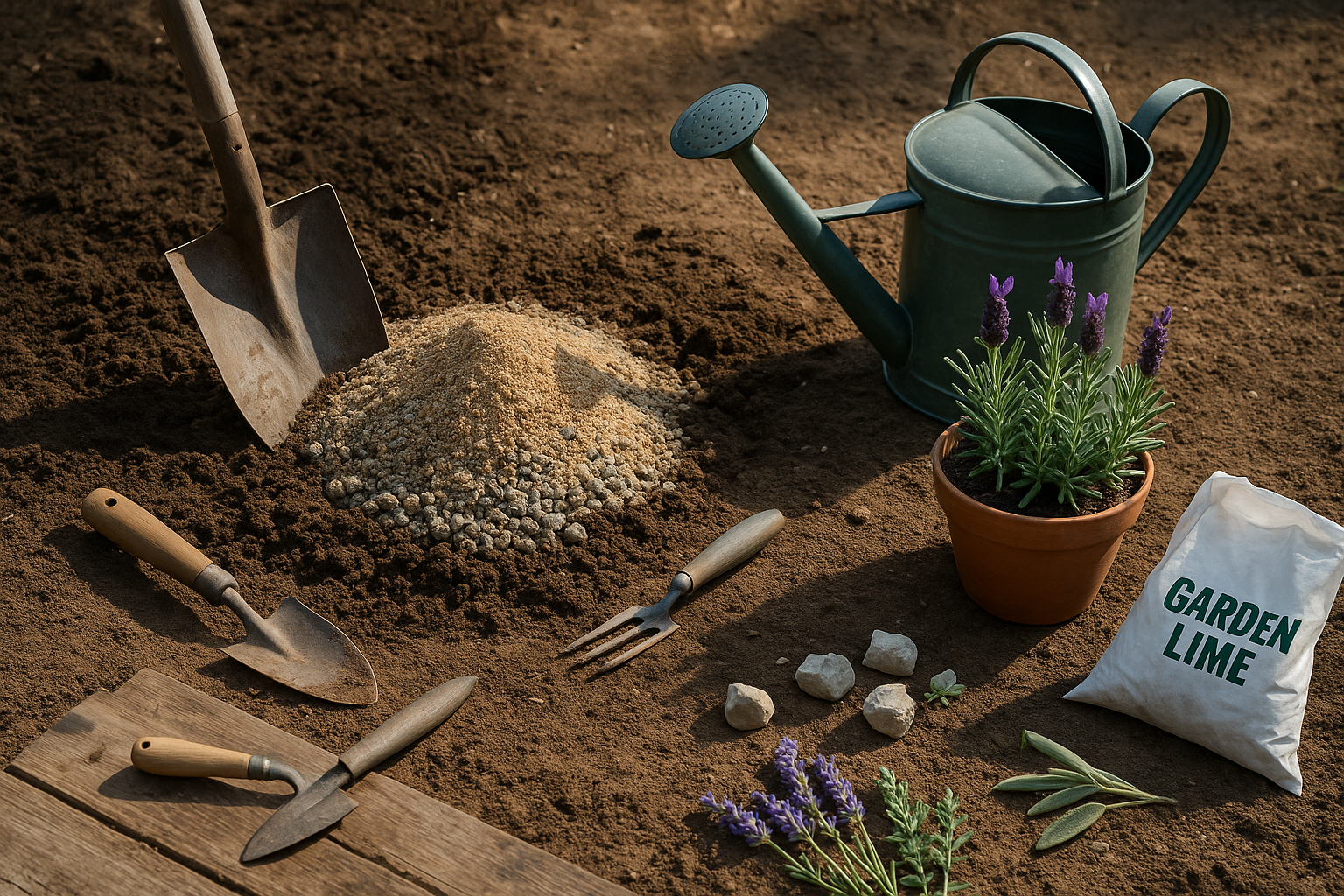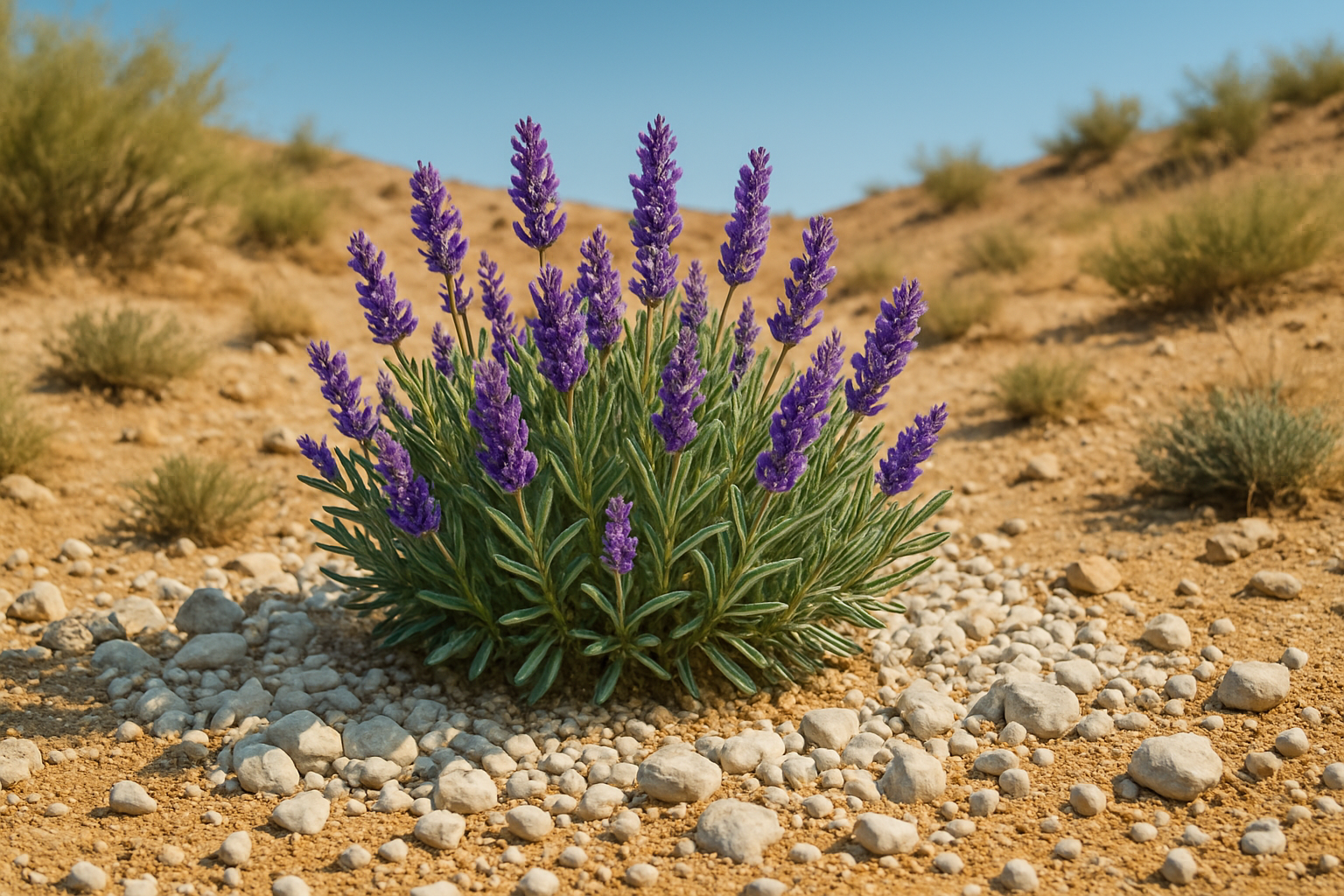Introduction
Lavender in hot climates is both a gardener’s dream and a unique challenge. Revered for its soothing fragrance, striking purple flowers, and low-water needs, lavender seems like the perfect fit for regions with intense sun and parched soils. But while lavender tolerates heat well, growing it in hot or dry regions isn’t always as effortless as it sounds—factors like poor drainage, unexpected humidity, and intense afternoon sun can threaten even the hardiest plants.
Whether you’re looking to fill your garden with pollinator-friendly blooms or searching for drought-resistant options, this article will guide you through proven ways to help lavender thrive. We’ll cover the best soil mixtures, watering schedules, ideal planting times, and top lavender varieties for tough climates. You’ll also find real-world tips on mulching, pruning, and dealing with pests. With the right know-how, you can turn even the hottest corner of your yard into a fragrant lavender oasis.
Choosing the Best Lavender Varieties for Hot or Dry Regions

When gardening in hot or dry climates, not all lavender varieties are created equal—choosing the right one can make the difference between thriving plants and constant struggle. Some of the best-suited lavenders for heat and drought include:
- ‘Phenomenal’, a hybrid prized for its exceptional resilience to humidity and extreme temperatures;
- French lavender (Lavandula dentata), recognizable by its toothed leaves and showy purple flower “rabbit ears”;
- Portuguese lavender (Lavandula latifolia), known for its robust aromatic oil and tolerance to full sun;
- Goodwin Creek Grey, a cultivar admired for its silver-grey foliage and consistent blooms throughout the hottest months.
These varieties share traits like deep or extensive root systems, thick leaves that conserve moisture, and a natural tolerance for poor, well-drained soils—making them especially well-adapted to challenging environments.
Each option comes with its own pros and cons:
- ‘Phenomenal’ offers classic fragrance and color but may need a little extra space to spread;
- French lavender impresses with its unusual flowers and subtle fragrance but is less cold-tolerant;
- Portuguese lavender delivers a bracing, camphorous scent and large flower spikes, though it can grow aggressively;
- Goodwin Creek Grey stands out for ornamental value and heat tolerance but may not have the strongest fragrance.
For gardeners in hot regions, focus on varieties that resist wilting, don’t mind intense afternoon sun, and still deliver the vibrant color and scent that make lavender so beloved—making time spent in the garden easier, even at the peak of summer.
Preparing the Soil for Lavenders in Arid Climates

Lavender thrives in arid climates when the soil is just right: well-drained, low in fertility, and slightly alkaline with a pH between 6.5 and 7.5. For garden beds, start by choosing a sunny spot and clearing weeds. Dig down at least 12 inches to loosen the soil, then work in coarse sand or gravel to boost drainage—this is especially crucial in clay-heavy soils that hold water and suffocate roots.
Mixing in a few cups of lime per square yard will gently raise the pH if your soil is acidic. If you’re planting lavender in containers, use a mix of equal parts potting soil, coarse sand, and small pebbles or perlite. Avoid rich composts; lavender doesn’t want fertile soil, just fast-draining and airy.
For tough clay soils, consider mounding beds 12–18 inches above ground level or planting on gentle slopes so water runs off easily. Lay a layer of mulch made from small gravel or white stones around plants to reflect heat and keep roots dry, but avoid moisture-trapping organic mulches.
Before planting, water deeply once and then allow the top few inches to dry out—this helps roots search for moisture and makes for tougher, longer-lasting lavender.
Watering and Humidity
Finding the right balance for watering and humidity is key, especially during very hot and dry weather. In these conditions, most plants need to be watered more frequently—typically every 1-3 days, depending on how quickly the soil dries out. Check the soil before each watering by sticking your finger an inch deep; if it feels dry, it’s time to water, but if it’s still damp, hold off.
Aim for a deep, thorough soaking early in the morning or late in the evening to minimize evaporation and ensure roots absorb what they need. Avoid overwatering, as it can suffocate roots and lead to root rot, a common issue when water sits stagnant around the base of the plant.
To help retain moisture without risking rot, mulch the soil with a 2-3 inch layer of straw, wood chips, or bark, keeping the mulch a few inches away from stems to allow airflow. Mulching not only insulates the soil but also helps create a cooler microclimate that slows down moisture loss.
When it comes to humidity, most garden plants thrive in moderate levels—low humidity causes leaves to dry and wilt, while high humidity can encourage fungal problems. In dry air, misting leaves lightly or grouping plants together can boost humidity, while in humid climates, ensure good airflow by spacing plants apart and pruning excess foliage.
By tuning your watering habits and managing the environment, you can help your garden weather extreme conditions without putting your plants at risk.
Sun, Temperature, and Shelter
Lavenders love soaking up the sun and truly thrive when planted in spots that receive at least six to eight hours of direct sunlight daily. The ideal temperature range for lavender is between 60°F and 85°F (15°C to 29°C), making them perfect for sunny borders or herb gardens in temperate climates.
While lavenders are quite heat-tolerant, extreme heat waves or temperatures over 90°F (32°C)—especially when combined with hot winds—can stress the plants, causing wilted foliage or faded blooms. If you live in an area where scorching afternoons are common, one simple trick is to place your lavender where it gets morning sun and a bit of afternoon shade, such as near the eastern side of taller shrubs or a fence.
For potted lavenders, you can easily move them to a slightly shadier spot as the day grows hotter. Mulching with light gravel also helps reflect sunlight and protect roots from overheating. When hot winds are an issue, temporary windbreaks like garden fabric, a lattice screen, or strategically placed potted plants can offer shelter—just be sure air still circulates so the lavender doesn’t become too humid.
During heat spells, avoid overhead watering during the hottest part of the day; instead, water early in the morning so soil moisture is available as the day warms up. With just a little extra care and shelter when needed, lavenders will stay robust and continue filling your garden with color and fragrance, even through summer extremes.
Seasonal Care
Proper seasonal care is crucial for helping your plants thrive, especially during hot and dry seasons when stress levels are high. Pruning should be done just before the hottest part of the year, ideally in late spring or early summer, to remove any dead or damaged branches and encourage new, healthy growth.
Focus your efforts on thinning the canopy slightly, which increases airflow and reduces the risk of disease. However, avoid severe pruning, as over-cutting can leave plants vulnerable to sunburn and dehydration.
When it comes to feeding, it’s best to err on the side of caution. Use a balanced, slow-release fertilizer sparingly—over-fertilizing in heat can stress root systems and do more harm than good. For most plants, a single application at the start of the season is sufficient.
Plant stress can reveal itself in several ways:
- Wilting leaves
- Browning or scorched edges
- Stunted growth
If you notice these symptoms, act quickly by watering deeply in the early morning or late evening to minimize evaporation. Consider using mulch to retain soil moisture and keep roots cool. Shade cloth or temporary garden covers can also help protect delicate plants from intense midday sun.
By timing your pruning, minimizing fertilizer use, and responding quickly to signs of stress, you’ll give your garden the best chance to weather the season’s challenges.
Common Pests, Diseases, and Troubleshooting in Hot/Dry Regions
Lavender is surprisingly resilient in hot, dry climates, but certain pests and diseases can still take a toll if not managed early. Spider mites are a common culprit, thriving in dry air and appearing as tiny red or yellowish spots on the leaves, often leaving delicate webbing behind.
Leafhoppers and whiteflies may also show up, causing speckled leaves or sticky residue. Fungal issues are less common in arid conditions but can still arise if soil drainage is poor or plants are overwatered—watch for signs like yellowing leaves, wilt, or soft brown spots at the base of stems.
Early detection is key: inspect plants regularly, especially during prolonged hot spells or if you notice stunted growth.
Prevention Tips
- Encourage beneficial insects like ladybugs by planting nearby flowers.
- Regularly hose down plants in the morning to gently dislodge mites and deter dust buildup, making conditions less attractive to pests.
- Ensure your lavender has plenty of airflow by spacing plants generously and lightly pruning after flowering.
- Avoid overhead watering, as wet foliage encourages disease; instead, water at the base and let the soil dry between sessions.
- Mulch with gravel rather than organic mulch to keep roots cool and dry, further discouraging fungal outbreaks.
Conclusion & Final Tips
Choosing the right varieties for your garden and sticking to straightforward care routines are the foundation of gardening success. Remember, what thrives in one region may struggle in another, so paying attention to your local climate and making small adjustments can make all the difference—whether it means watering a bit more during dry spells or selecting heat-tolerant plants.
Don’t be afraid to experiment with new types and pay attention to what works best for you. Every gardener’s journey is unique, and sharing your experiences can inspire others too. Happy gardening, and enjoy discovering what grows best in your own backyard!
